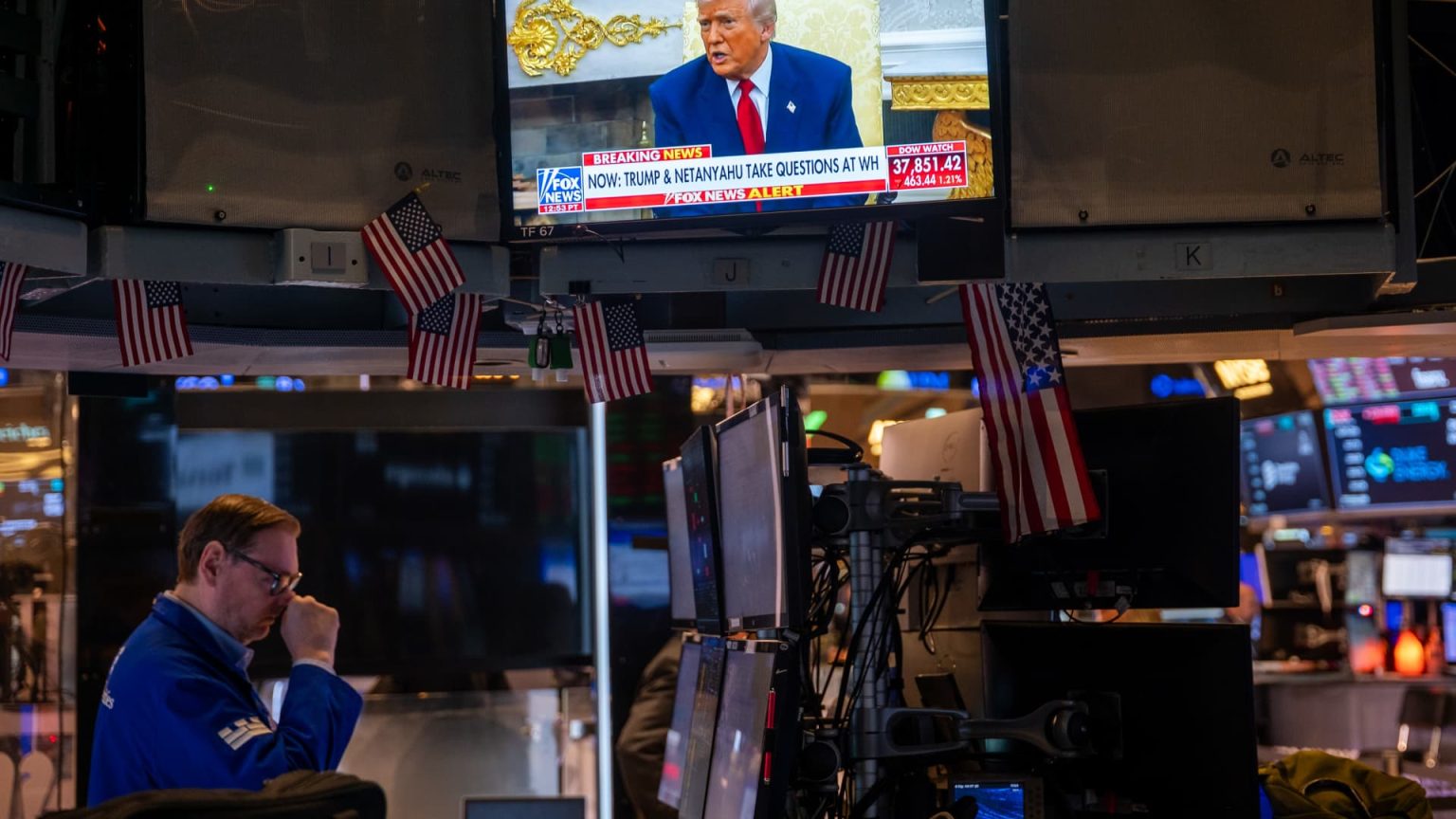In a striking economic analysis, reports indicate that President Donald Trump‘s first 100 days in office have resulted in the worst performance for the stock market at the start of a presidential term since the 1970s. The S&P 500 has seen a significant decline of 7.9%, reflecting waning investor confidence amid aggressive policy announcements and trade negotiations. The implications of this downturn are profound, especially as concerns about potential recession loom over the economic landscape.
| Article Subheadings |
|---|
| 1) Historical Context: Market Performance During Presidential Transitions |
| 2) Initial Market Reactions to Trump’s Election |
| 3) Trump’s Trade Policies and Their Economic Impact |
| 4) Investor Sentiment and Market Predictions |
| 5) Concluding Observations and Future Outlook |
Historical Context: Market Performance During Presidential Transitions
Understanding the stock market’s reaction to presidential transitions provides valuable insight into economic sentiment. Historically, the stock market’s performance during a new president’s initial months is a barometer of investor expectations and ideological shifts in policy. According to data from CFRA Research, the S&P 500 index’s decline of 7.9% during President Donald Trump’s first 100 days marks the second worst beginning since President Richard Nixon in 1970, who saw a 9.9% fall due to economic policies that led to the recession of 1973. Examining these trends allows analysts to evaluate how historical patterns might predict future market behaviors.
Initial Market Reactions to Trump’s Election
The initial reaction from the markets following President Trump‘s unexpected election victory was overwhelmingly positive. Euphoria took hold as the S&P 500 surged to unprecedented highs, climbing 3.7% from Election Day to Inauguration Day. Investors were buoyed by promises of tax cuts and deregulation that many believed would fuel economic growth. However, this optimism has since given way to skepticism as the reality of the president’s policies began to unfold.
Trump’s Trade Policies and Their Economic Impact
In the early days of his presidency, President Trump prioritized a bold approach to trade, implementing tariffs that he described as “reciprocal.” This aggressive strategy generated immediate concern among investors regarding its potential to inflate prices and trigger a recession. In April, following these announcements, the S&P 500 sharply declined, losing 10% in merely two days, with some experts noting this prompted the index to briefly enter bear market territory. Subsequently, Trump adjusted his stance, allowing a 90-day window for countries to renegotiate trade deals. While this seemed to pacify some market anxieties, lingering doubts about the trader’s impact on the broader economy continue to unsettle investors.
Investor Sentiment and Market Predictions
Market analysts have expressed mixed sentiments regarding the current state of the S&P 500.
“Everyone’s looking for this bottom here,”
remarked Jeffrey Hirsch, editor of the Stock Trader’s Almanac. Despite minor recoveries, there is a prevailing belief that the index is experiencing a bear market rally, suggesting that the risks of further declines are substantial. Questions surrounding the economic direction and the president’s policies have resulted in a cautious outlook for investors, as many call for clarity and stability from Washington.
Concluding Observations and Future Outlook
As President Trump approaches the end of his first 100 days, there is a palpable sense of urgency among traders and analysts alike. The S&P 500’s closing at 5,525.21 is a stark reminder of how quickly gains can evaporate; in fact, it has fully erased all post-election increases recorded since November. While there are only two trading days remaining in this assessment period, any potential rally could position Trump near the third worst start, a 6.9% decline experienced by President George W. Bush in 2001. The market’s trajectory going forward will be closely monitored as it attempts to navigate ongoing uncertainties.
| No. | Key Points |
|---|---|
| 1 | The S&P 500 fell 7.9% in President Trump’s first 100 days, the worst start since Nixon in the 1970s. |
| 2 | Initial euphoria post-election saw the S&P 500 rise, only to fall sharply due to aggressive trade policies. |
| 3 | Investors are concerned about inflation and recession risks stemming from Trump’s trade negotiations. |
| 4 | Market analysts doubt the sustainability of minor market recoveries, citing bear market concerns. |
| 5 | As the 100-day mark approaches, the S&P 500’s performance may determine the broader economic outlook. |
Summary
In conclusion, President Donald Trump‘s initial tenure has been marked by significant volatility in the stock market, reflecting broader economic anxieties. As the uncertainties surrounding trade policies and fiscal measures continue to elicit concern among investors, the implications for the U.S. economy are far-reaching. The next few days will be critical in determining whether the market can stabilize or if a resurgence of negativity will prevail.
Frequently Asked Questions
Question: What has been the stock market’s performance during Trump’s presidency?
The S&P 500 has decreased by 7.9% in President Trump’s first 100 days, marking one of the worst starts to a presidential term since the 1970s.
Question: How did the market react to Trump’s election?
Initially, the market surged 3.7% from Election Day to Inauguration Day, but soon faced a significant downturn as investors reacted to Trump’s aggressive trade policies.
Question: What are investors concerned about regarding Trump’s trade policies?
Many investors are worried that Trump’s trade policies will lead to higher inflation and potentially push the economy into a recession, creating uncertainty in the market.


